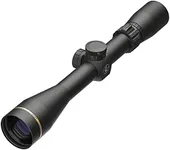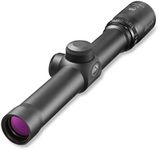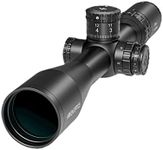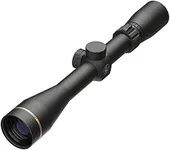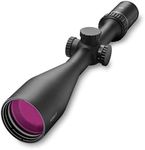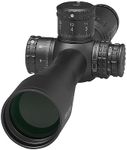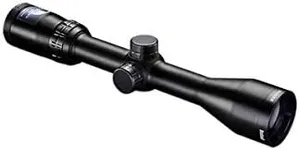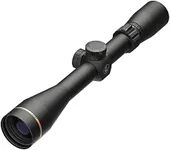Buying Guide for the Best Rifle Scopes
Choosing the right rifle scope can make a big difference in your shooting experience, whether you’re hunting, target shooting, or just enjoying time at the range. The best scope for you depends on how and where you plan to use it. Understanding the key features will help you match a scope to your needs, making your shots more accurate and enjoyable. It’s important to think about the distances you’ll be shooting, the lighting conditions, and how much adjustment you want to make while aiming. By focusing on the main specifications, you can find a scope that feels just right for your style and purpose.MagnificationMagnification tells you how much closer the target will appear through the scope compared to your naked eye. This is usually shown as a single number (fixed magnification) or a range (variable magnification, like 3-9x). Lower magnification (1-4x) is great for close-range shooting and quick target acquisition, while higher magnification (9x and above) is better for long-distance shots. If you mostly shoot at short to medium ranges or need to react quickly, a lower magnification is easier to use. For long-range precision, higher magnification helps you see details but can make it harder to find your target quickly. Think about your typical shooting distance to decide what’s best for you.
Objective Lens DiameterThe objective lens diameter is the size of the front lens, measured in millimeters. A larger lens lets in more light, which can make the image brighter and clearer, especially in low-light conditions like dawn or dusk. Common sizes range from 32mm to 56mm. Smaller lenses make the scope lighter and easier to handle, while larger lenses are better for low-light visibility but add weight and bulk. If you often shoot in bright daylight, a smaller lens is usually enough. For hunting at dawn or dusk, or in dense woods, a larger lens can help you see better.
Reticle TypeThe reticle is the pattern you see when you look through the scope, often called the crosshairs. There are many types, from simple crosshairs to more complex designs with dots or lines for estimating distance and bullet drop. Simple reticles are easy to use and great for beginners or general shooting. More advanced reticles, like those with mil-dots or BDC (bullet drop compensator) marks, help with long-range shooting and adjusting for wind or distance. Choose a reticle that matches your experience level and the type of shooting you plan to do.
Tube DiameterTube diameter is the width of the main body of the scope, usually measured in millimeters (like 25mm or 30mm). A larger tube can allow for more adjustment in elevation and windage, which is helpful for long-range shooting. However, larger tubes can also make the scope heavier. For most casual shooters, a standard tube size is fine, but if you plan to shoot at long distances and need more adjustment, a larger tube might be worth considering.
Eye ReliefEye relief is the distance you can hold your eye from the scope and still see the full image. Longer eye relief is important for high-recoil rifles to prevent the scope from hitting your face when you shoot. Typical eye relief ranges from about 3 to 4 inches. If you use a rifle with strong recoil or want extra comfort, look for a scope with longer eye relief. For low-recoil rifles, standard eye relief is usually enough.
Adjustment TurretsAdjustment turrets are the knobs on the scope that let you change the point of impact for windage (left/right) and elevation (up/down). Some turrets are simple and capped, meant for set-and-forget use, while others are exposed and designed for quick, precise adjustments in the field. If you plan to shoot at varying distances or in windy conditions, look for turrets that are easy to adjust and have clear markings. For set distances or casual use, basic turrets are usually sufficient.
Parallax AdjustmentParallax adjustment helps keep the target and the reticle in the same focus, especially at longer distances. Some scopes have a fixed parallax, while others let you adjust it for different ranges. If you shoot at long distances or want the sharpest possible image, a scope with parallax adjustment can be helpful. For most short- to medium-range shooting, fixed parallax is usually fine.



